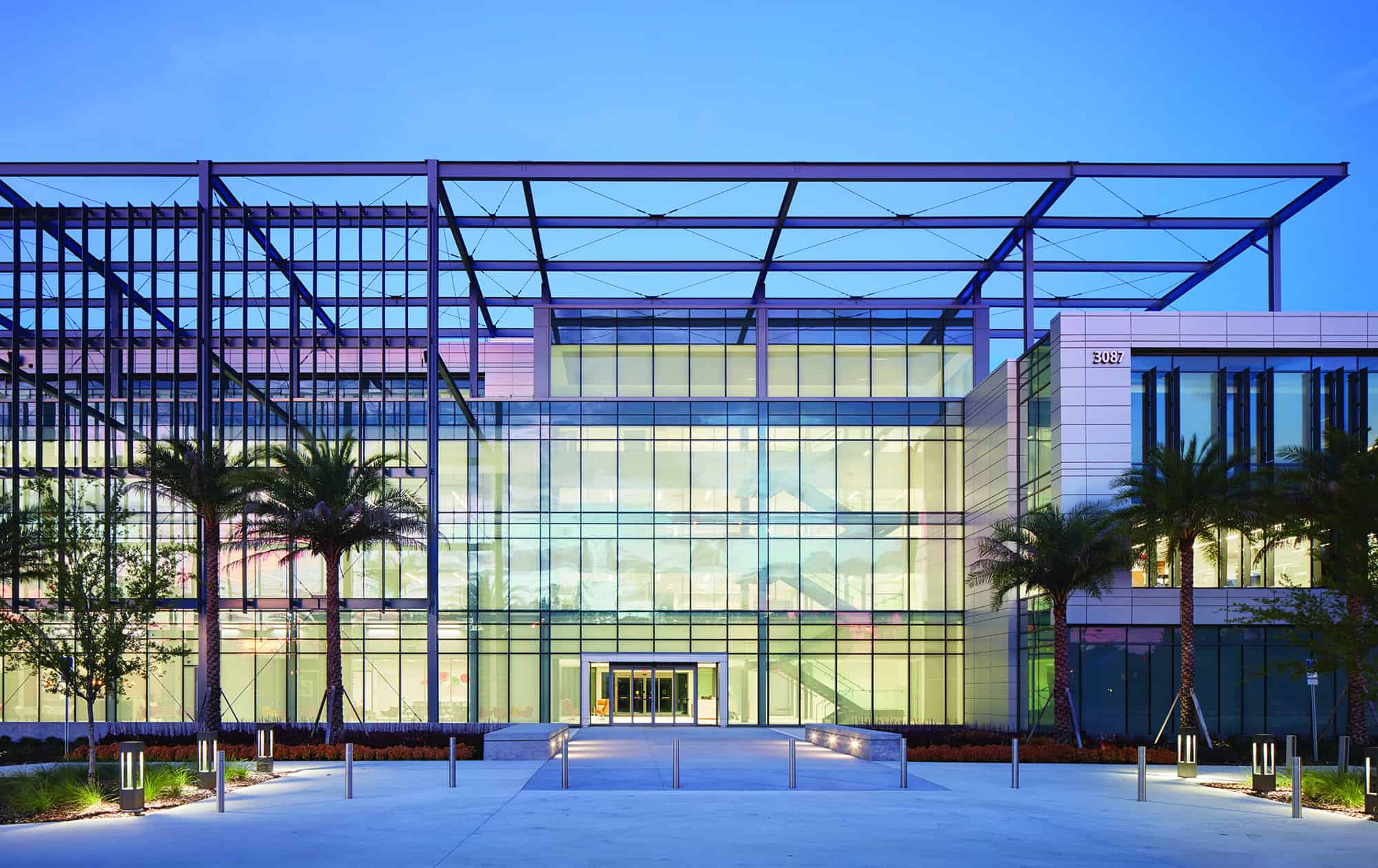Future-proofing anticipates the future, allowing for the development of methods to minimize the effects of shocks and stresses of future events. It’s a broad term used in industries such as electronics, healthcare, industrial design, and, more recently, in design for climate change. In essence, future-proofing is about withstanding the test of time.
Building owners need to understand the importance of future-proofing. According to Architecture 2030, the built environment generates 40% of annual global carbon emissions. Through more eco-conscious construction and renovation, we can improve energy performance, increase asset value, be proactive against future regulations on carbon emissions per building, and reduce the impact of climate change. Not to mention immediate benefits such as lower utility bills and creating healthier spaces for occupants.
FUTURE-PROOFING CONSIDERATIONS
When designing buildings to withstand future scenarios, several factors should be considered:
- The adaptability of a building and its systems in the face of climate change,
- The likelihood of environmental changes,
- The anticipated magnitude, and
- The cost of future-proofing against said changes
The assessment process is very complex. While future-proofing a building design against all anticipated scenarios may seem safe, designing toward those not pertinent to a specific site is counter-productive. It can result in a waste of time, finances, and material resources.
INNOVATIVE ENGINEERING TACTICS FOR FUTURE-PROOFING
Working with a team of engineering professionals trained on cutting-edge offers in their respective fields ensures that the behind-the-scenes functions are as optimal today as they will be in years to come. This both preserves and maximizes the initial investment.
Energy Consumption
As the human population continues to rise, so does the demand for energy consumption. The cost of energy increases is likely. Even energy security is not a given. Buildings can reduce energy consumption through the following:
- Efficient building envelope design
- Efficient building operations systems
- Use of alternative sources of energy, such as photovoltaic panels
- Use of heat pumps to both heat and cool a building
Additionally, some power plants are moving towards an initiative to produce electricity using resources that release fewer carbon emissions.
Low Carbon Materials
Being mindful of the building materials used also helps to reduce carbon emissions. Although products like sealants and insulation are good at curbing energy use, many have enormous carbon footprints, potentially negating any carbon savings you might receive from building efficiency.
Substituting sustainable building materials such as mass timber—engineered wood that is exceptionally strong and versatile—for concrete and steel is one solution.
Flexibility
Purposeful engineering design would need to be part of the overall design if flexibility was a desired component of the facility. The engineered system would need to be configurable to allow for advances in control methodologies, technical advances, and future renovations.
Building Resilience
As climate change impacts weather patterns, it’s imperative to ensure buildings can adapt and respond accordingly. Strategies for resilient design range from rainwater harvesting, composting toilets, and waterless urinals to strengthening the building’s critical systems to withstand extreme weather and even building in manual overrides to reduce dependence on complex controls and processes.
IN SUMMARY
In summary, no one knows for sure what the future holds. But, with the right team, you can be confident that your building can weather any storm and continue to increase in value for many years.

